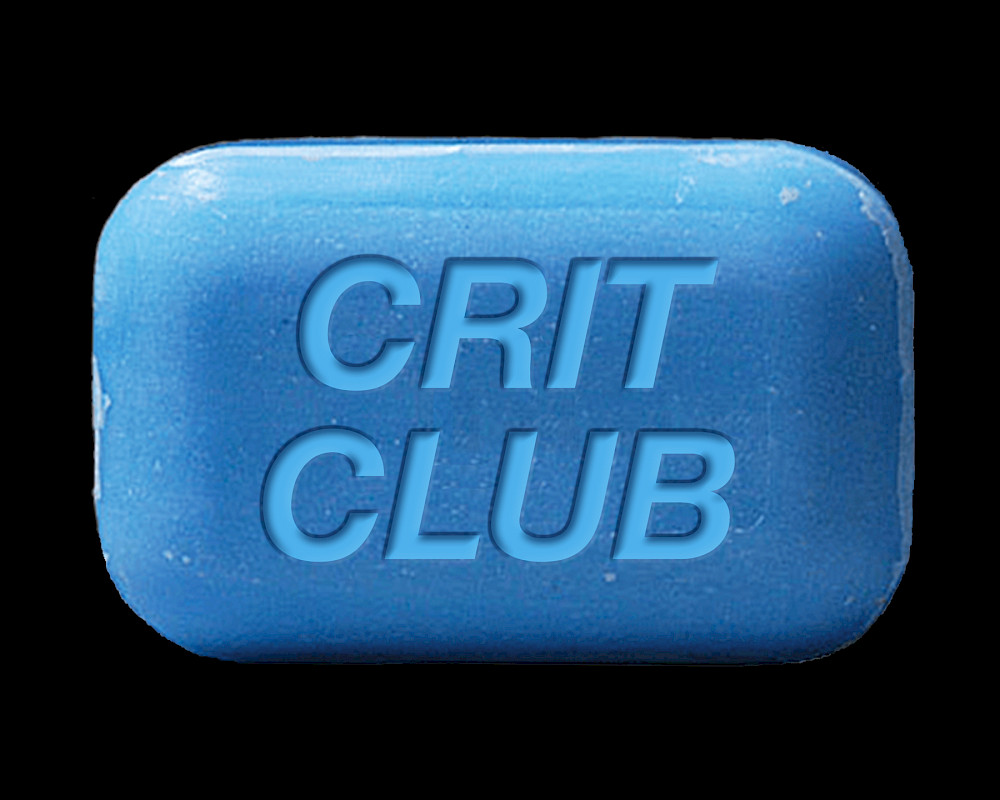mind
Check-in with... Maarten Spruyt
Berber Meindertsma
Berber Meindertsma has been with Het HEM since its founding in 2019. Alongside her responsibilities as development manager, she has curated and cultivated public and community programmes for Het HEM. She continues to develop her own research interests by writing on topics concerning hosting, hospitality and resonance in art.
mind
Check-in with... Stéphanie Janaina
Berber Meindertsma speaks with dancer and choreographer Stéphanie Janaina, almost four years after she performed ¡miércoles! at Het HEM.
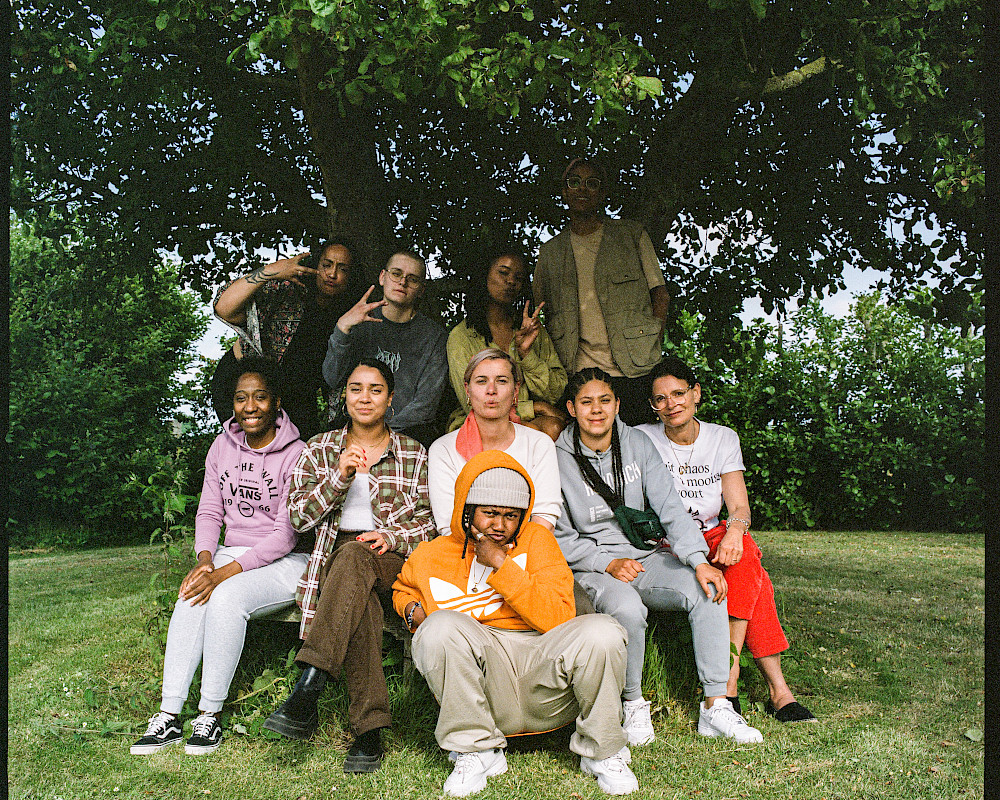
mind
Check-in with… HMTP talents and coaches
After the music video release Vamos by KG and Fabs, a track written during the Homebase Music Talent Programme (HMTP) Writer’s Camp, Berber Meindertsma speaks with them and two of the coaches of the camp.

interview
Check-in with... Wil Spier
“If people are interested, they understand everything in the world. The problem is getting them interested.”
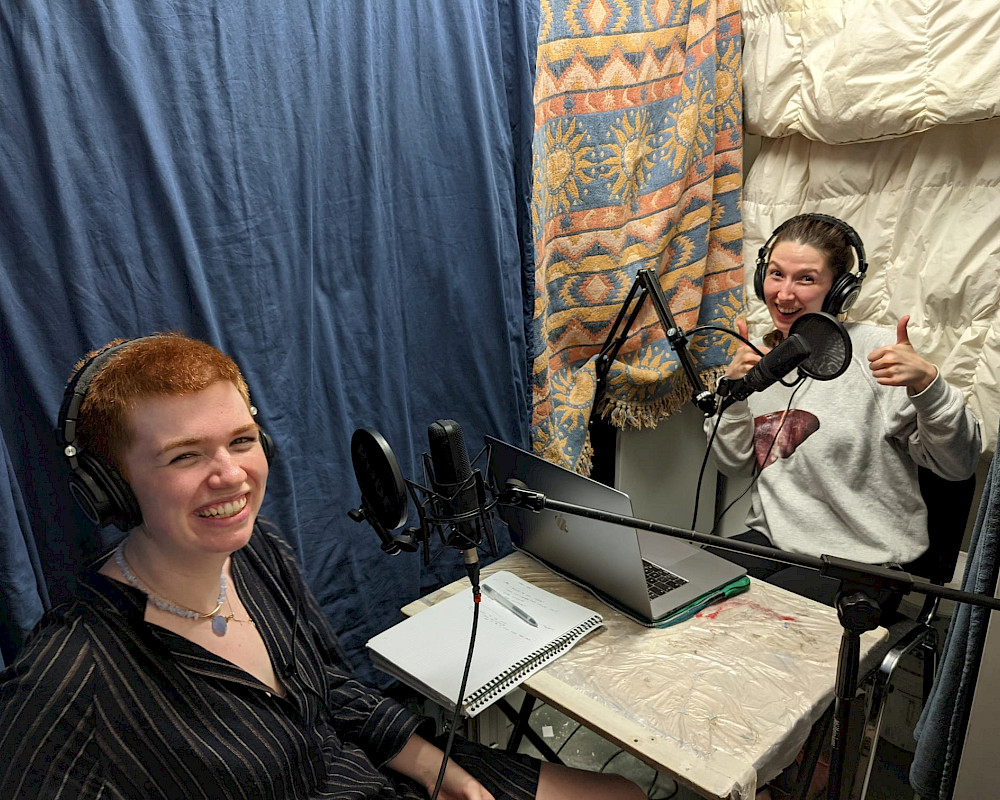
interview
Introducing Future Artefacts FM
From September 2023 to February 2024, The Couch is hosting 4 episodes of the London-based radio show Future Artefacts FM. Together with the first episode, we sit down with the initiators Nina Davies and Niamh Schmidtke to give you the full story behind their radio show.

interview
Check-in with... Sara Koops
Ever wondered what boxing is all about, and what art might have to do with it? Sit back and enjoy this check-in with professional boxer Sara Koops, who participated in the Chapter 1NE Box clinic at Het HEM in 2019.

essay
Hospitality on demand
Can the concept of hospitality provide us with a critical lens to explore what kind of relationships socially engaged art institutions can build online ?
Blanka Gyulai
Blanka Gyulai is a student of Liberal Arts and Sciences based in Utrecht. She also brews beer and coffee on the side to sustain her expensive appetite for knowledge. During her 3-months internship at Het HEM, she explored topics at the intersection of technology, power, spirituality, and art. Originally from Hungary, she is interested in the division between Western and Eastern European forms of identity construction and the potential of art to be used as a tool to negotiate questions of (non)belonging.

essay
The mindless sc/troller
If the postmodern (digital) experience is a similarly disorienting experience to that of the modern flâneur, then is it possible to adopt the same approach to the web as to the city, where the mind can freely wander and transform?
8
min read

Exit through the garden.
Maarten Spruyt is known as a curator, art director and stylist based in Amsterdam, with an incredible knack for beauty and sensory perception. On his website he calls himself “a collector of atmospheres, [who] is always looking for a representation of the zeitgeist”.
At Het HEM, he was the Guest of Chapter 3HREE in 2020 - the unlucky first year of COVID-19. What he showed here was that he is not only a collector, but also a creator of atmospheres. Together with Het HEM’s former visual arts curator Rieke Vos, he created a sensory art experience in the seemingly endless space of the 200-meter underground shooting range of Het HEM (you can sonically explore the shooting range here). Visitors were led into this space one by one after they had answered some dubious questions in the waiting room and having the camera of their phone taped off. In the tunnel they surrendered to the time and place of that moment. They were forced to rely on their intuitions as they encountered a great number of large and small works in all imaginable mediums – with no explanatory texts.


Three years later, late June 2023, Maarten’s exhibition Through Bone and Marrow at BRUTUS in Rotterdam has just finished. It is clear that there is a thread running between Chapter 3HREE and Through Bone and Marrow – a continuation and deepening of the seemingly contradictory nature of Maarten’s philosophy that simultaneously proposes the importance of returning to old things and challenging the self to try out new things and get out of one’s comfort zone. In this Check In, we dive deeper into Maarten’s approach to creating experiences that helps you navigate the real world.
Becoming lifelong friends
Visiting Through Bone and Marrow was like running into an old friend I hadn’t seen in years. In the raw industrial spaces of BRUTUS, where the paint is peeling off the walls, the roof is leaking and the floor squeaks when you walk, I quickly became submerged in Spruyt’s world. The artworks looked strangely familiar; out of place and space, yet also totally at home where they were, underscored by ominous sounds.
Some of the artists I recognised from Chapter 3HREE, such as Maartje Korstanje and Ossip. But in this new setting, their works gained new meaning. Korstanje’s work were stronger, bigger, bolder; I felt lifted by them. Ossip’s work reminded me of my right to feel vulnerable and small, throwing me back to childhood memories. These emotional responses, making you turn inwards, are exactly what Maarten is after. Going back to artworks you already know helps with that: you’re not distracted by paltry facts about the artist or concept – you know all that already. You can finally allow yourself to look. To see, hear, smell. New details emerge the longer you stick around. You can build a relationship with an artwork if you take your time.


Recognising these artworks allowed me to reflect on the moment I encountered them first. What has changed since, in the world and in me? Maarten’s show at Het HEM was unfortunately cut short because of the pandemic; it couldn’t reach as many people as we all wanted it to. But in a way, his urgent call to put away our phones and immerse ourselves in the experience of the decaying world came at the perfect time. COVID-19 seems like a distant memory to those fortunate enough to have weathered it unscathed, but I know that two-year intermission left its mark on the way people seek experiences and relate to the outside world.
To look back again and again at stories that move you can help create something new out of the disappearing and fleeting, bringing it to life again with renewed force. “I select artists and artworks based on their ability to get under your skin – you can't put a finger on the sensation they cause exactly, but you can feel they are trying to communicate with something inside of you. It was important for me to bring in the works by Ossip and Maartje Korstanje in BRUTUS, as these works lay bare the nerves (Ossip) and provide you with a spine and backbone (Korstanje). You need both the softness and hardness in order to be able navigate the difficult times we live in.”

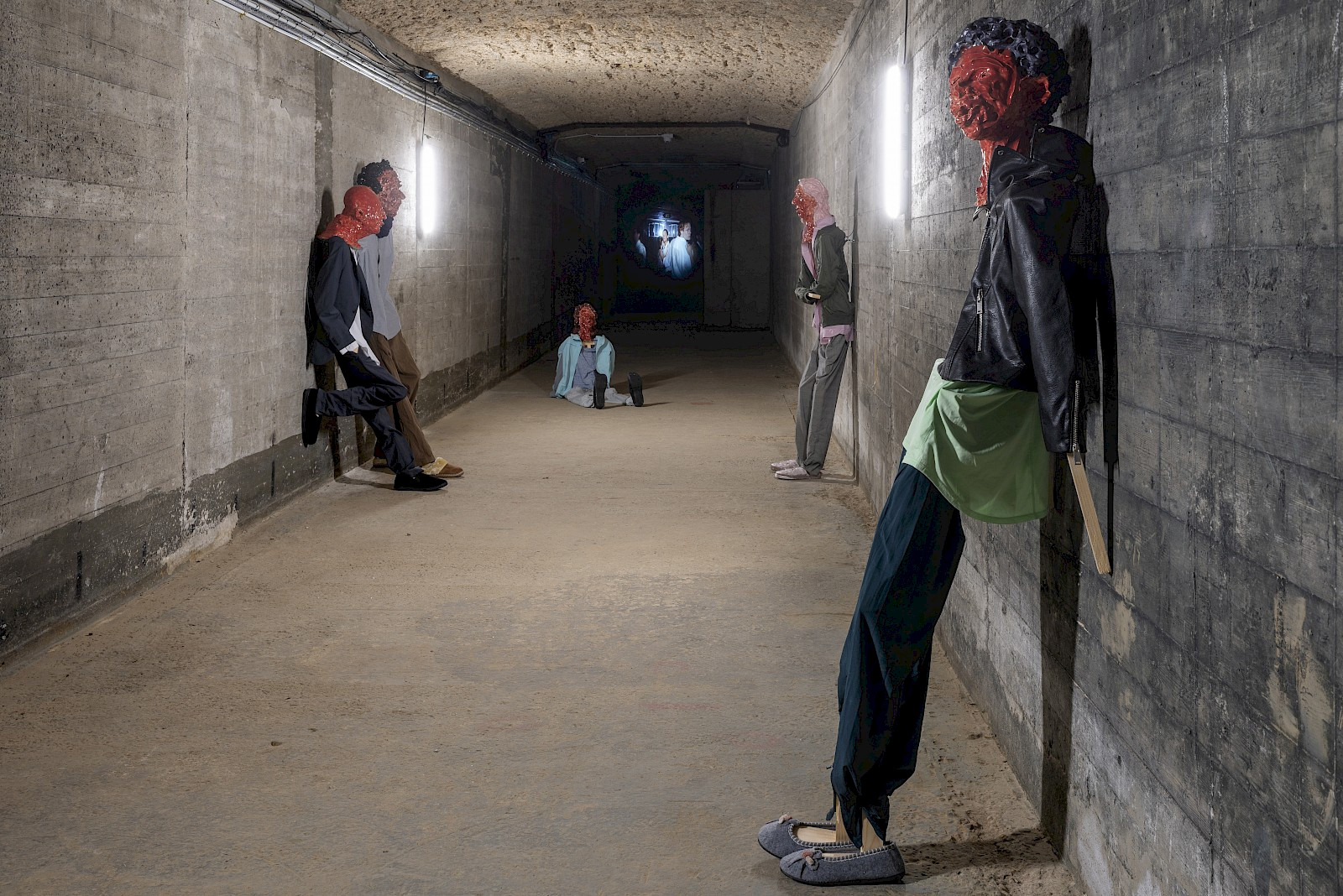
At times it is important to move forward and search for new techniques and modes of artistic expression. But at other times, one needs to lean back to rest and digest the information we bombarded with in the age of technology, on the verge of ecological collapse. The pandemic, in putting a halt on the natural speed of things, forced this reflection on people.
“In a sense, this is the best time for creative people and artists to share their view of our changing world. It won’t come from politics or from being anti to what is happening. I strongly feel that if we start paying attention to our environment and stand still for a bit, we might notice a new rhythm bringing forth new ideas and hopes for the future”, Spruyt says. Showing and seeing ‘old’ works in new settings is part of this process. He creates a story and guides the viewer through it, setting the mood and creating the narrative. The different parts of the spaces act as chapters, the route one-directional with no room for turning back, evoking new feelings in visitors as the story unfolds. The longer you stay, the more you discover.
Like any story, his exhibitions need a good ending. An exit through the garden for example. Not the conventional and logical way out from the building of BRUTUS – it’s just the emergency exit. Maarten leaves the visitor in the bewilderment of nature, inviting them to look at their environment with fresh eyes and a heightened awareness.
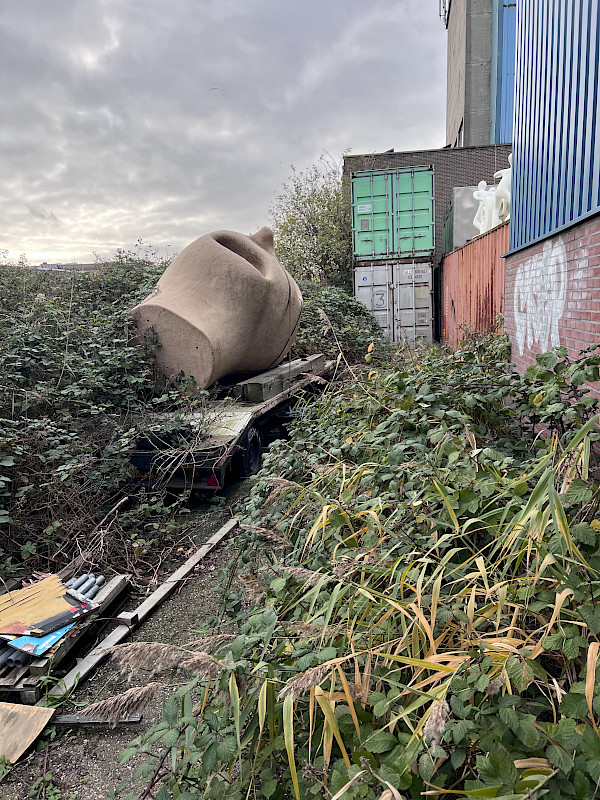

"What is important now is to recover our senses” [1]
Maarten’s exhibition at BRUTUS feels raw, like an open nerve. I am confronted with painful things. But, as Spruyt reminds us, if we don't have a spine, a bone that holds us together, we as humans are going to fall apart. We won’t even be able to stand.This is the core message of Maarten’s latest story. His exhibitions respond to what is happening now; they start with an observation of what society needs. For years now, for him this has to do with how people relate to their environment. He has a clear urge to wake people up, to change people’s behaviour. It is about going out of your comfort zone and experiencing something inside of you that was perhaps always already there, but you hadn’t yet discovered. His worldview is communicated sensually. “I try to make exhibitions which make you look inwards, feel uncomfortable and sit with that for a moment. A feeling comparable to letting your eyes adjust to the dark.”
Sound is an important element in achieving that goal; it is also one of the aspects of exhibition-making Spruyt is most excited about regarding future projects.
"Sound can take unexpected turns, especially in old buildings. It blends together and starts to carry the building and the artworks inside of it. This ungraspable aspect of sound really appeals to me. Chapter 3HREE was an eye-opener in that sense. I was afraid that the sounds from some of the installations in Het HEM’s shooting range would interfere with others, but the sound leakage had an unforeseen positive effect. It made the building come alive, and the exhibition bigger than the sum of its parts. At BRUTUS I continued experimenting with sounds through collaborating with Dyane Donck. She made new compositions for the exhibition, partly based on the existing sounds of some of the works like Joris Strijbos’ sirens. The compositions would sometimes bring you into a meditative state, almost like falling into a deep sleep, whilst others gave you goosebumps.”
Sound is emblematic of a new type of aesthetics Maarten proposes – one in which not only the eyes, but also the ears and a spatial-temporal awareness are activated. A type of relational aesthetics which feels organic and inclusive. No element, discipline, older or newer work, younger or older artist is favoured over the other; no knowledge or experience in art or background information is needed to be able to understand the works. Artworks and scenography are selected on the basis of their potential to create resonance – experiences that do not have to be harmonious per se but can also touch you to the bones in the discomfort they bring out.
This kind of resonance reaches across time and space: two artworks shown together, years apart, in a new setting, create a temporal link that is a little like nostalgia, but not quite. It’s about giving the works the time they need to create the resonance themselves, rather than it being mediated by a curator or storyteller. They’re identical twins meeting after a long time – discovering how they’ve both changed, and which parts have grown closer together.
[1] Susan Sontag, Against Interpretation, 1964





